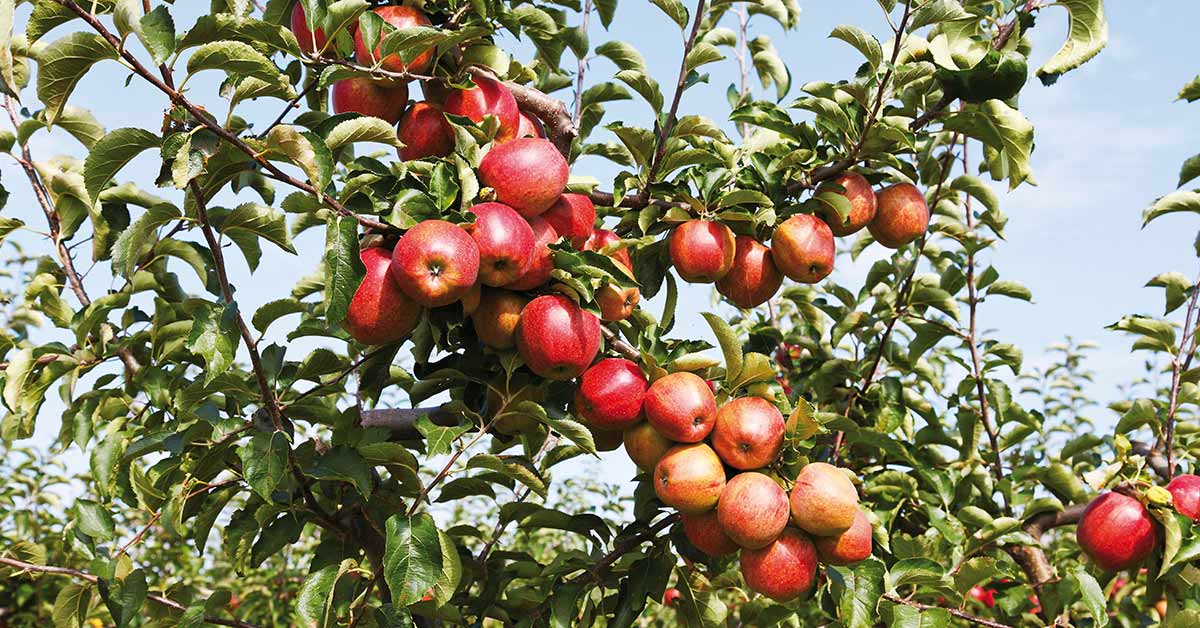An old pecan farm in Atlanta grew wild from neglect. There were plans to build townhouses that never panned out. So, the land waited for years, close to the Lakewood-Browns Mill community, a food desert where one-third of its inhabitants live in poverty. Then Atlanta came together with the Conservation Fund, local nonprofits, and volunteers to turn the old farm into the United States’ largest free food forest.
A Huge Free Food Forest for the Community
The forest is open to the public with plans to expand in the coming years. It “kind of flips our agricultural model on its head,” said Mike McCord of the nonprofit Trees Atlanta. “Unlike with commercial farming, we’re growing food on multiple layers. A forest has canopy trees, small trees, bushes, ground covers, vines, fungus, things going on in the root zone. The idea is to mimic our natural forests and grow productive things on all seven layers.” [1]
Posted by Urban Food Forest at Browns Mill on Wednesday, May 15, 2019
The area includes planter boxes for the community to grow vegetables on their own. Best of all, multiple trails spiral through the property, surrounded by over a hundred fruit and nut trees free for anyone to take. These trees include apples, plums, pomegranates, persimmons, and figs. The area also grows mushrooms, corn, tomatoes, squash, cucumbers, and peppers
“It’s not some perfectly designed landscape architecture plan,” says Stacy Funderburke, Conservation Acquisition Associate at the Conservation Fund. “If you were to see the before and after photos, you’d say it’s incredible. But at the end of the day, I wouldn’t say aesthetics are the main driver of this project.” [2]
Of course, the free food forest’s objective is to grow free produce for the community and provide them with a beautiful natural environment to relax and socialize.

A Forest in a Food Desert
Atlanta has issues with food accessibility, partly due to a poor public transportation system. Because of this, half a million people in and around Atlanta live in a classified food desert. Not only that, Atlanta’s general population consists of half a million, to begin with. Something had to be done to fight this crisis.
Two years ago, the city of Atlanta planned to ensure that 85% of the residents live within half a mile of fresh food by 2021. “With these types of projects, I don’t think that we should pretend they’ll feed everyone in a food desert,” says Funderburke. “But given the size, seven acres, it’s going to produce an impressive amount of food.”
Since then, the free food forest has continued to thrive. On the Urban Food Forest at Browns Mill Facebook page, classes on healthy eating, growing produce, and other communal events are frequently offered. The forest will continue to grow and expand as time passes. There are also partnerships with schools for outdoor learning and environmental education. The fruit trees originally planted, like apples and nectarines, were chosen because of their longevity. Hopefully, many future generations would be able to stroll through the forest and pick out these foods. There are even trails for walking and birdwatching. [3]
Creating More Forests
After the initial several hundred-thousand-dollar investments to buy and stock the land, the costs have gone down. The staff is small, but they help maintain the fauna and educate students and volunteers. The true force behind this free food forest’s success is the hard work of the incredible volunteers.
The original owners of the farmland, Ruby and Willie Morgan, used to leave extra produce on the fence for the neighbors to take. Then they sold it to townhouse complex developers until The Conservation Fund bought the area in November 2016. [4] Now they have transferred the official ownership to the city who plans to duplicate this success throughout Atlanta. The spirit of giving from the original farm has carried through to today — but in greater multitudes.
“The opportunity to replicate this is already coming up. The Parks Department is thinking about it,” says Funderburke. “It’s great to fast-forward five years from now. What if there were five of these food forests sprinkled around Atlanta? There could be. There’s enough land. It’s more about showing it’s possible.”
Keep Reading: The ‘8th Continent’ Is a Floating Self-Sustainable Ocean Cleaner
Sources
- “Atlanta’s Food Forest Will Provide Fresh Fruit, Nuts, and Herbs to Forage.” Bloomberg. Rebecca Renner. June 12, 2019
- “Forget the farmer’s market. Atlanta built a 7-acre edible forest.” Fast Company.Mark Wilson. June 3, 2019
- “Urban Food Forest at Browns Mill.” The Conservation Fund.
- “Atlanta creates first food forest in Georgia, largest in U.S.” AJC. Raisa Habersham. May 24, 2019

